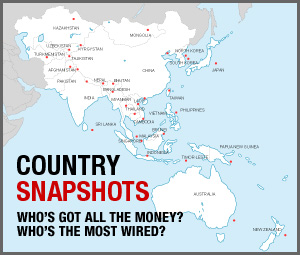
China
China faces tipping points in its economic and political strategies in the next ten years that will test its ability to maintain its candidacy as a superpower. In China’s case the turning of the decade provides an unusually crisp dividing line. It was in 2000 that it clinched entry to the World Trade Organisation. And since then China has fulfilled prophesies that surrounded the event by rising swiftly up the rankings to become the world’s third largest economy. It faced down the global economic crisis with $2 trillion in foreign exchange reserves (a war-chest generated by trade surpluses), and threw $600 billion into economic stimulus. Speculation even began that China might be the global economy’s white knight. Even so, few foresaw ten years ago how quickly Chinas economic growth would be matched by a pivotal role internationally, and the G8’s de facto acknowledgement that all meaningful talks must become G8 plus, adding bigger blocs that include China.
Never mind its success: Chinas economic growth model is cracked down the middle. What matters now is whether Beijing can find the political will to tackle these structural problems. The signs are not good. Failure could bring stagnation, and threaten the Communist Party’s tacit put-up-and-shut-up deal with the public, which rests upon ever-higher living standards.
Chinese economists express universal consensus on the need to drive growth by stimulating household consumption, yet growth strategies continue to rely on building more huge bridges and highways. Indeed, this consensus has been around for a few years now. Over-reliance on manufacturing has led to over-capacity in major industries, acerbated by crisis as officials pulled hard on familiar levers. According to the European Chamber of Commerce in China, aluminium capacity utilisation was probably 67 percent in 2009, steel 72 percent and chemicals 80 percent, with new plants still on the way.
Meanwhile, progress on liberating China’s huge pool of household savings by improving health and the welfare systems has been glacial, and most welfare benefits that exist remain geographically bound, meaning that poor migrants lose pension rights on returning home and the class and regional wealth gaps remain as big as ever. Saving remains a habit of survival.
The crisis year of 2009 has only consolidated the already problematic trend for the state and state-enterprises to take the lion’s share of consumption. Worryingly, there are signs that China’s ‘control coalition’ of censors and security agencies and has had a good year amidst so much uncertainty—there have been ever more aggressive clamp-downs on dissent, and confident attempts internationally to draw lines over Xinjiang and Tibet. Civic organisations remain severely discouraged and legally hampered. Dissidents continue to be jailed, and restrictions on the internet are being stepped up. As veteran human rights watcher John Kamm of the Dui Hua Foundation has warned in connection with the year-end trial of Liu Xiaobo, China seems to be getting tougher and more unyielding. Such brittleness will not make it flexible internationally either.
Mary Hennock is a freelance analyst based in Beijing. She contributes to Newsweek and The Guardian, and previously worked for the BBC Business and Economics Unit.










